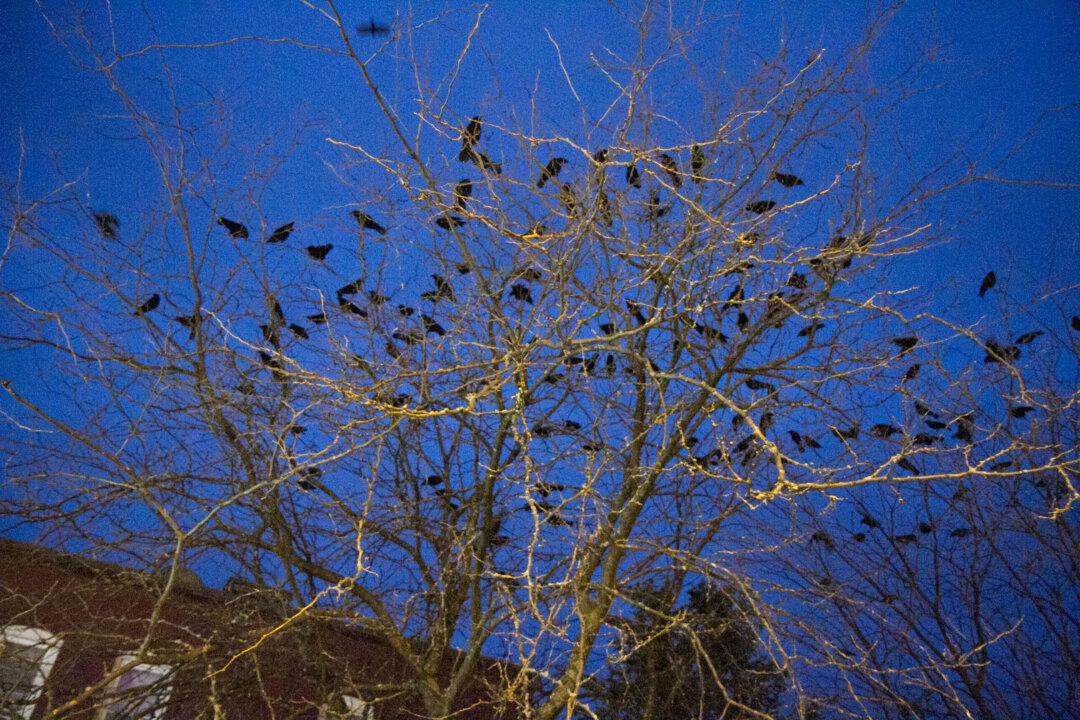MIDDLETOWN—Depending who you ask, the number of crows that congregate in downtown Middletown every winter are worse or about the same as previous years.
“Generally as the weather gets cold, they will leave en masse as it gets very, very cold. But this year it didn’t get cold,” said Director of the downtown Business Improvement District, John Degnan and the city’s resident crow expert.
The crows, which come in the thousands starting in the fall, roost on tall buildings and trees, leaving behind a blanket of bird poop wherever they roost.
Department of Public Works worker Deshaun Green, who was cleaning the sidewalk with a mix of water and antifreeze on a cold Friday afternoon, estimated four out of five days a week two DPW workers are out there power washing the sidewalk.
“In two days it will look like we never touched it,” he said.






